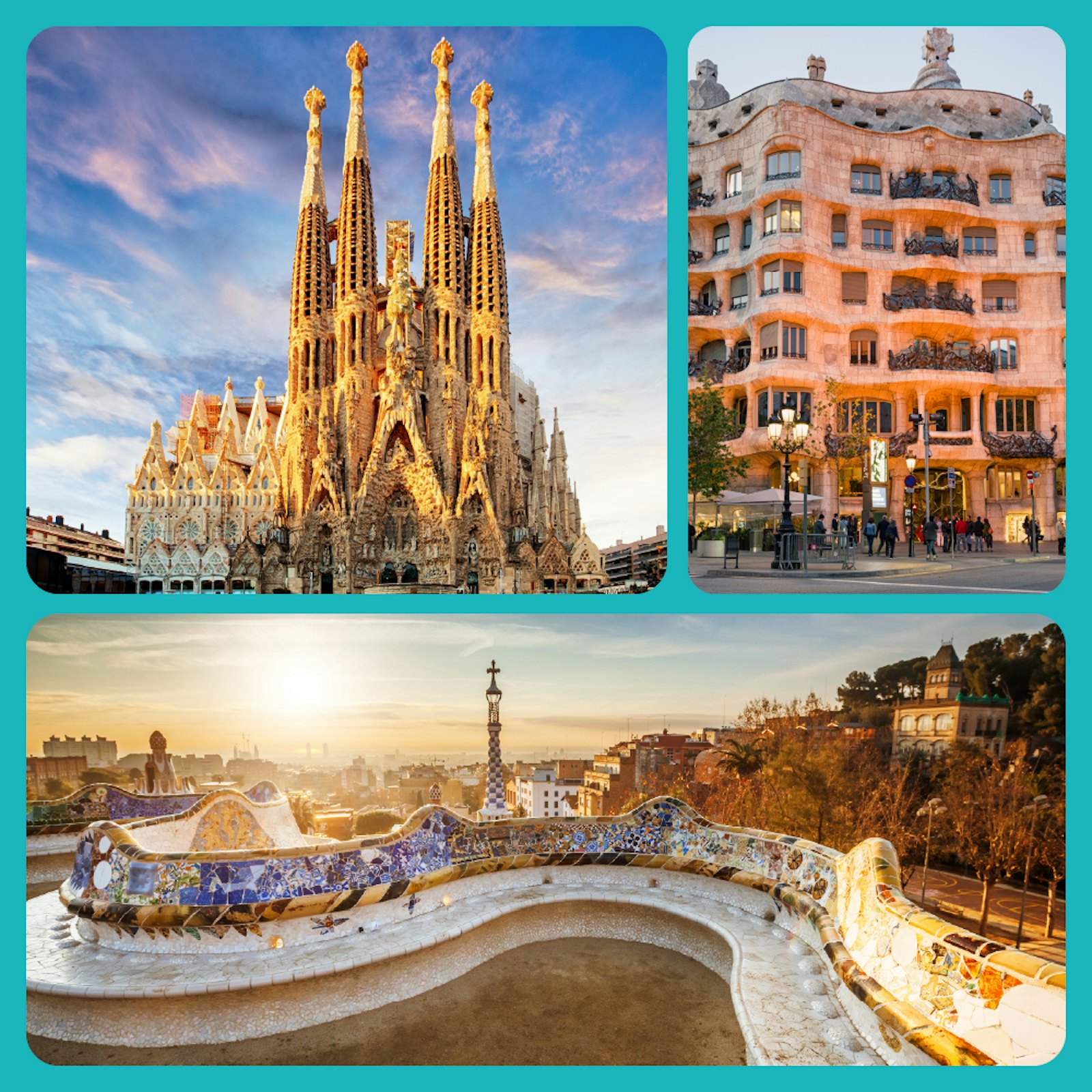Domenech i Montaner's Barcelona Pass
Enjoy the legacy of one of Barcelona's greatest architects
- Sant Pau Art Nouveau Site: Skip The Line Entry Ticket | Sant Pau Hospital
- Palau de la Música Catalana: Skip The Line + Audio Tour
- Domènech-inspired Tapa at Casa Fuster

Domènech i Montaner's Barcelona Pass Tickets & Information
{{ticket-block-triple}}
About Lluís Domènech i Montaner
Lluís Domènech i Montaner was born in December 1850 and passed away in December 1923.
A renowned Catalan architect who is celebrated alongside architectural giants like Antoni Gaudí and Josep Puig i Cadafalch. Domènech i Montaner's innovative designs and significant contributions to the Modernisme movement have left a lasting impact on both Barcelona and the broader architectural world.
His father, Pere Domènech i Saló, was a prominent bookbinder in the early 19th century, and his mother, Maria Montaner i Vila, came from a notable family.
Domènech i Montaner studied architecture at the prestigious 'Escola de la Llotja' in Barcelona. During this formative period, he developed a profound interest in merging art with architecture, a theme that would define his career.
Domènech i Montaner was more than just an architect. He was also a historian, writer, teacher, politician, and a typographer. He is responsible for some of Barcelona's most iconic buildings, including several UNESCO World Heritage sites.
Sant Pau Art Nouveau Site - UNESCO World Heritage Site
The Sant Pau Hospital was constructed between 1902 and 1930 and is a masterpiece of Modernisme architecture and a UNESCO World Heritage Site. Domènech i Montaner designed the hospital on the site of an old medieval hospital, intending it to enhance the well-being of patients through architectural and natural beauty. He incorporated gardens, natural light, and intricate mosaics into the design as he wanted it all to aid the recovery of the patients. The 16 colourful pavilions with ornate detailing reflects his dedication to detail and his desire to bring joy to the architecture with the aim of aiding in the healing process. The Sant Pau Art Nouveau Site was declared a UNESCO World Heritage Site in 1997 and remains one of our best-selling attractions in Barcelona.
Palau de la Música Catalana - UNESCO World Heritage Site
The Palau de la Música Catalana is another remarkable example of Catalan Art Nouveau designed by Lluís Domènech i Montaner. Built between 1905 and 1908 for Orfeó Català and funded by popular subscription, the building was declared a UNESCO World Heritage Site in 1997. The Palau has hosted numerous world premieres, and its Concert Auditorium is one of the most distinctive in the world. The magnificent organ that presides over the main stage offers an awe-inspiring view to the audience, adding to the venue's unique charm.
Popular Tickets
Popular Attractions
Recinte Modernista Sant Pau Fun Facts
- A Modernist Masterpiece by Domènech i Montaner: Designed by the renowned Catalan architect Lluís Domènech i Montaner, Sant Pau is one of the most significant examples of Catalan Modernisme (Art Nouveau) architecture. Domènech i Montaner is also the genius behind other iconic buildings like the Palau de la Música Catalana.
- A "City Within a City": Sant Pau was conceived as a garden city for healthcare, with 27 interconnected pavilions. Each building was thoughtfully designed with natural light and ventilation, creating a tranquil environment for patients and staff.
- Inspired by Nature: Domènech i Montaner incorporated natural motifs like flowers, plants, and animals into the design. The colourful ceramic tiles and mosaics were filled with symbolic elements meant to foster healing and positivity for the patients.
- A UNESCO World Heritage Site: In 1997, Sant Pau, along with the Palau de la Música Catalana, was declared a UNESCO World Heritage Site for its outstanding architectural and cultural significance!
- From Hospital to Cultural Center: After serving as a hospital for over a century (1902–2009), the site was restored and reopened in 2014 as a cultural and historical complex. It now hosts exhibitions, events, and guided tours.
- Built with the Patient in Mind: Domènech i Montaner designed the hospital with innovative features for its time. Separate pavilions were dedicated to different specialties, and underground tunnels connected them, ensuring efficient and discreet patient transfers.
- A Mosaic of Healing: The intricate mosaics throughout the complex aren't just decorative; they incorporate religious and allegorical symbols, like saints and protective figures, believed to aid in the healing process.
Useful Information About Sant Pau Art Nouveau
Tips for Visiting
- Book Tickets Online: Its an easy and convenient way of securing your space.
- Combination Tickets: Consider one of our great combination tickets. Click HERE for details
Recinte Modernista Sant Pau Opening Hours
- Monday: 09:30 - 16:00
- Tuesday: 09:30 -16:00
- Wednesday: 09:30 -16:00
- Thursday: 09:30 -16:00
- Friday: 09:30 -16:00
- Saturday: 09:30 -16:00
- Sunday: 09:30 - 16:00




























